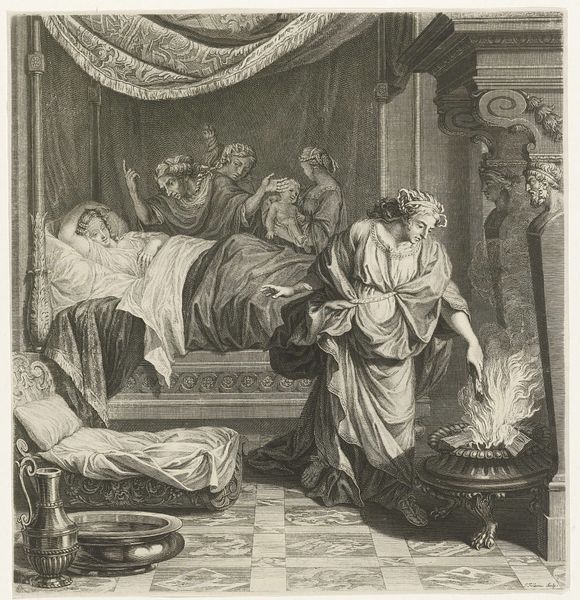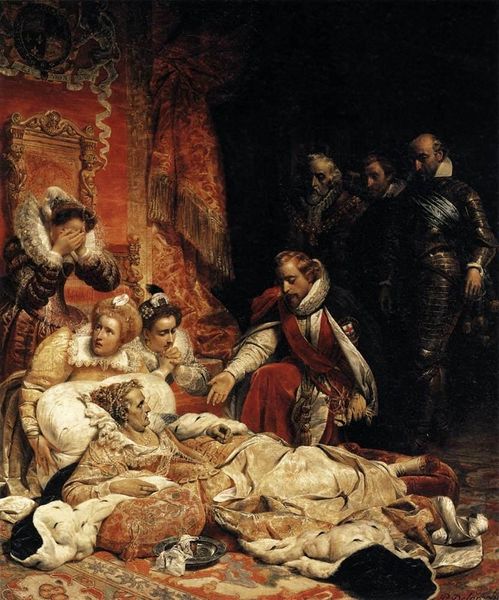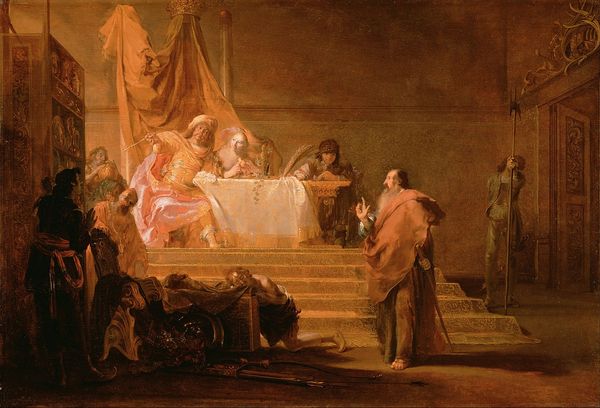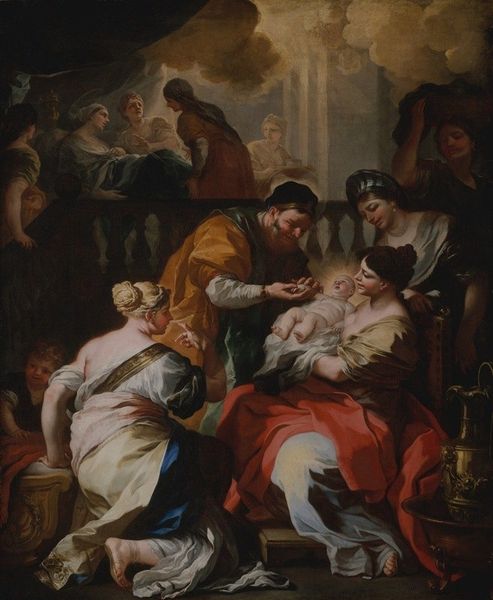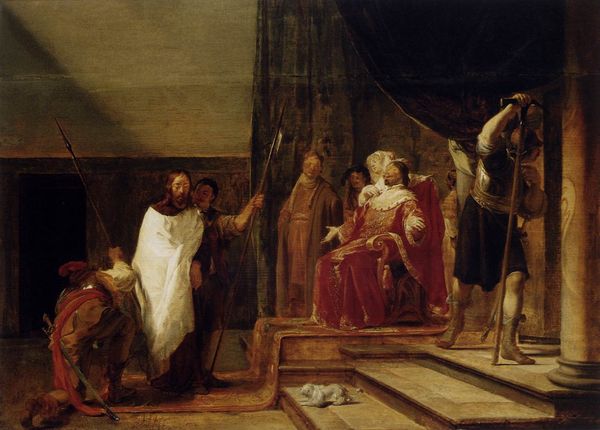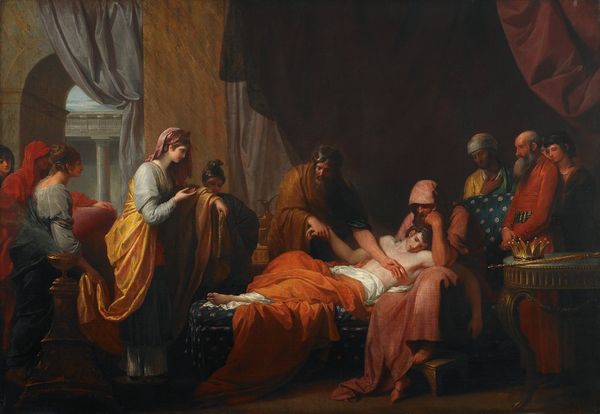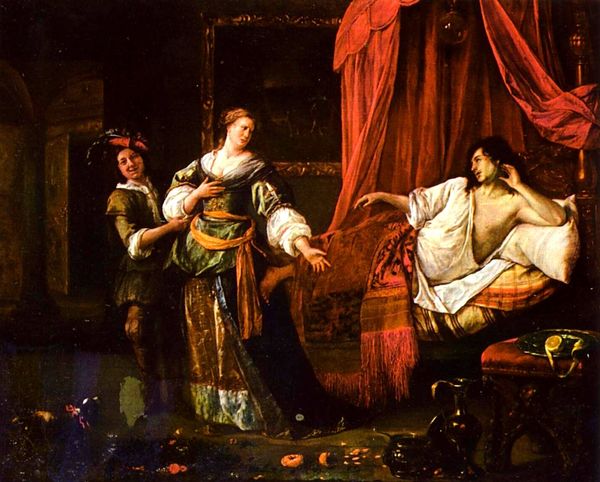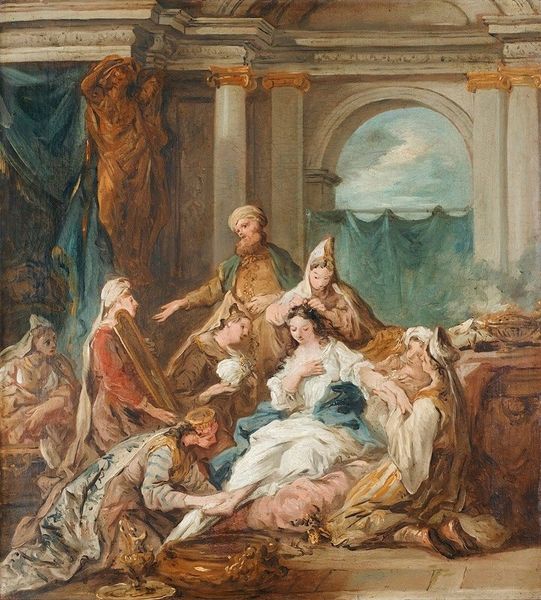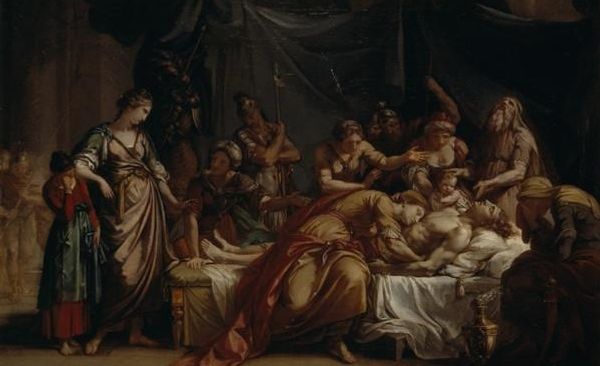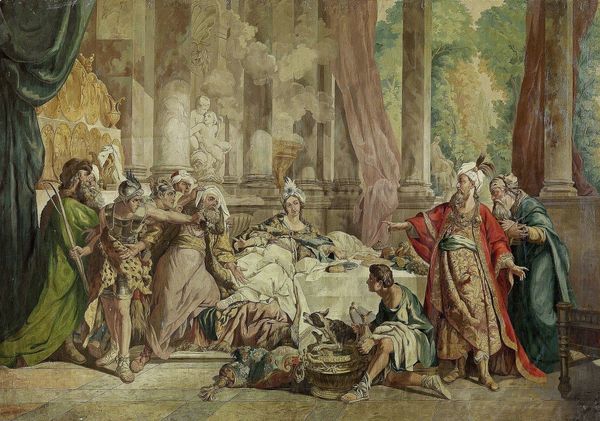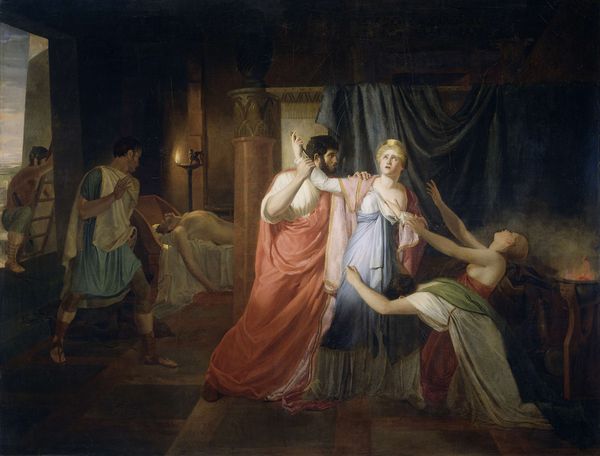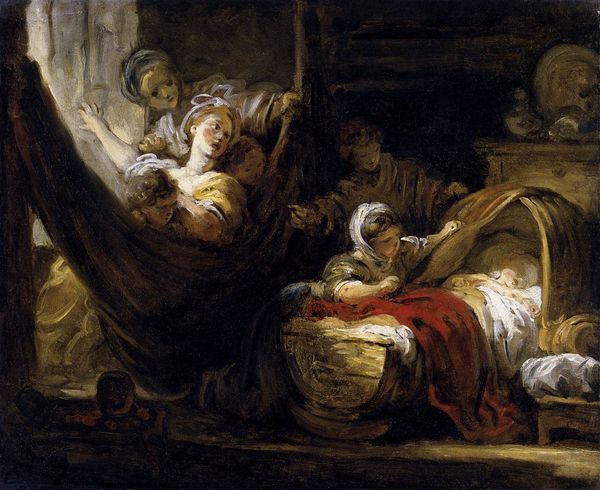
painting, oil-paint
#
neoclacissism
#
allegory
#
narrative-art
#
painting
#
oil-paint
#
classical-realism
#
figuration
#
oil painting
#
classicism
#
history-painting
#
academic-art
#
realism
Copyright: Public domain
Curator: The somber atmosphere here is palpable. The dim light and hushed tones truly set the scene. Editor: Indeed. We are looking at Gavin Hamilton’s 1775 oil painting, "Priam Pleading with Achilles for the Body of Hector," currently residing at Tate Britain. Notice the artist's meticulous layering and use of glazes. The materiality creates a somber and emotionally dense image, which only contributes to the atmosphere. Curator: Absolutely. Think of the story, though – Priam, the aged King of Troy, debasing himself before Achilles, the slayer of his son, Hector. It speaks to themes of grief, mortality, and the profound costs of war, repeated motifs of Western civilization that come down to us through symbols like Hector's body itself. Editor: And Hamilton's production mirrors the epic scope of the *Iliad* itself, while also emphasizing the raw materials used – canvas, pigment – underscoring the human element behind the grand narratives. See how the rich textures of the fabric contrast with the cold sheen of Achilles' armor. What story do these tensions and contrasts suggest about craft and labor in this historical painting? Curator: That armor isn’t just protection; it symbolizes Achilles's godlike status and his remove from human suffering, heightened by the vulnerability of Priam groveling. Editor: A godlike status reliant on the bronze trade networks and labor of smiths, though. Let’s not forget that! Even supposed divinity comes from terrestrial processes. And do consider the economics embedded in Neoclassical artwork production and exchange. What materials did the artists access? What social conditions of their creation do those reflect? Curator: A fair point. The image becomes an artifact itself then, embedding history at every layer, both pictorial and material. The visual drama and carefully staged composition encourage viewers to grapple with questions of revenge versus forgiveness. Editor: Thinking materially, the work prompts viewers to consider empire and exploitation too, by examining those raw materials and the labor embedded in the canvas, in those pigments. Curator: It definitely makes me appreciate how symbols continue to evolve, embedding values across generations, reflected in the very matter that manifests them. Editor: It highlights how supposedly grand narratives are shaped by these base elements—human toil and raw resources. Always worthwhile considering these base conditions of history itself.
Comments
No comments
Be the first to comment and join the conversation on the ultimate creative platform.

